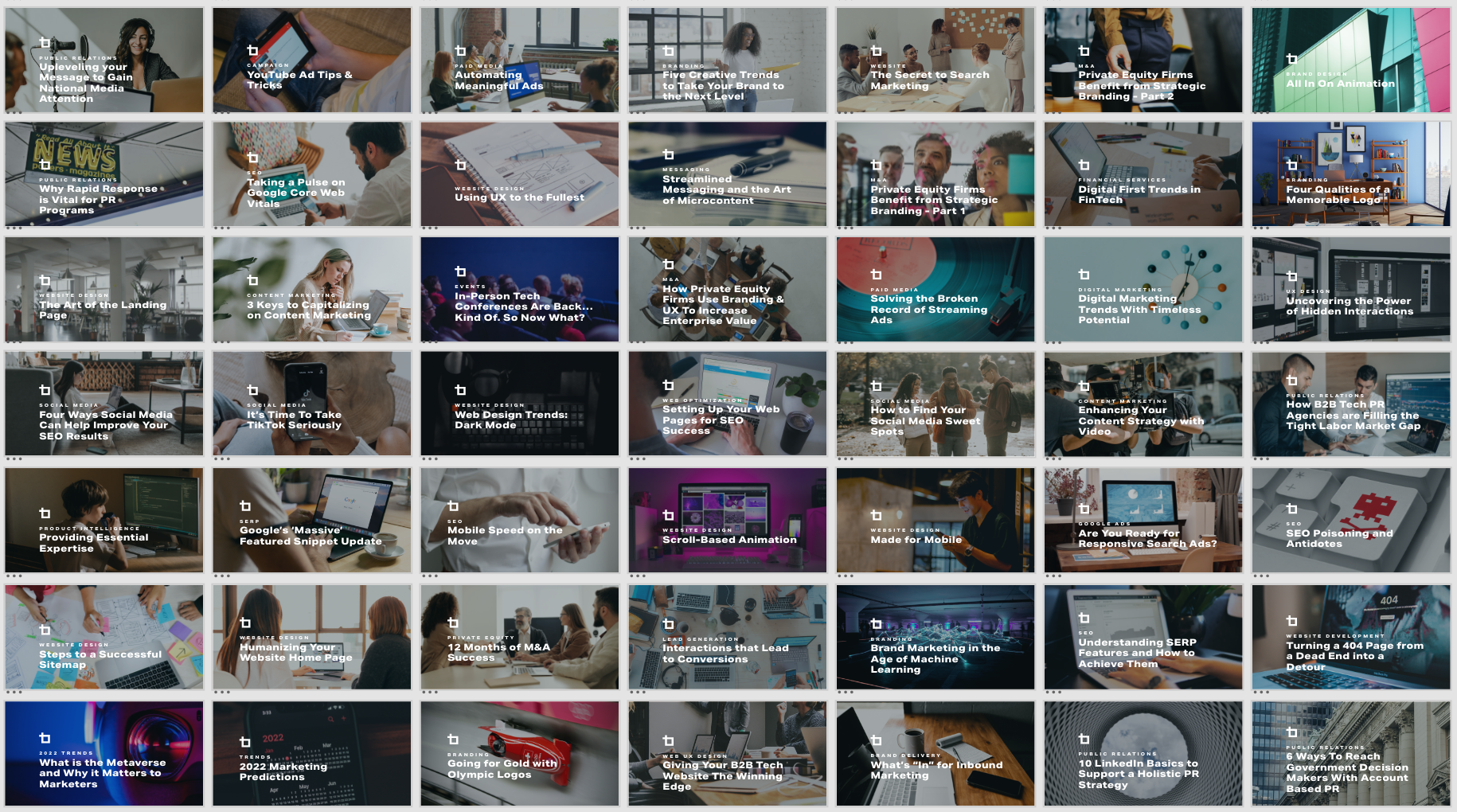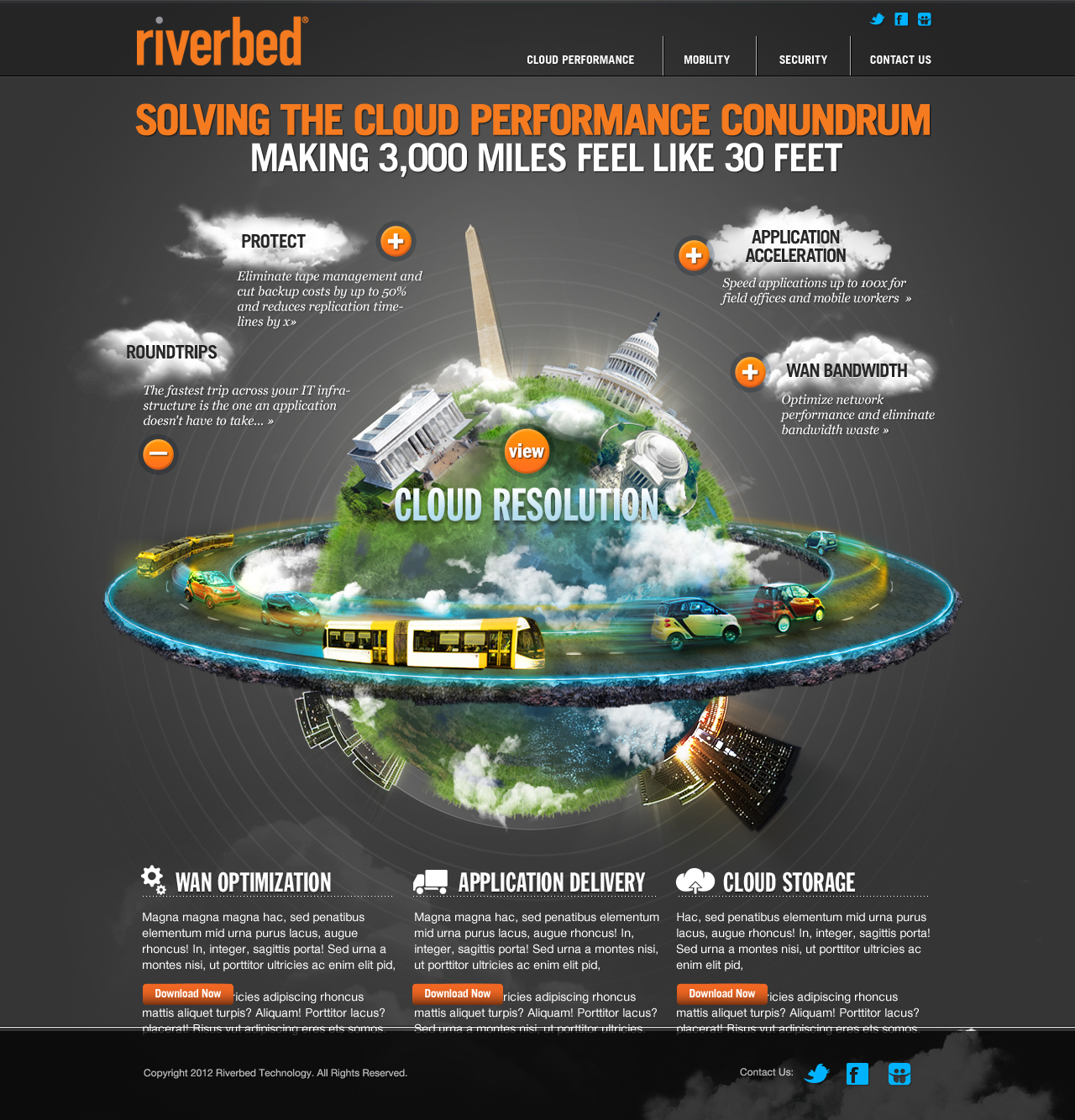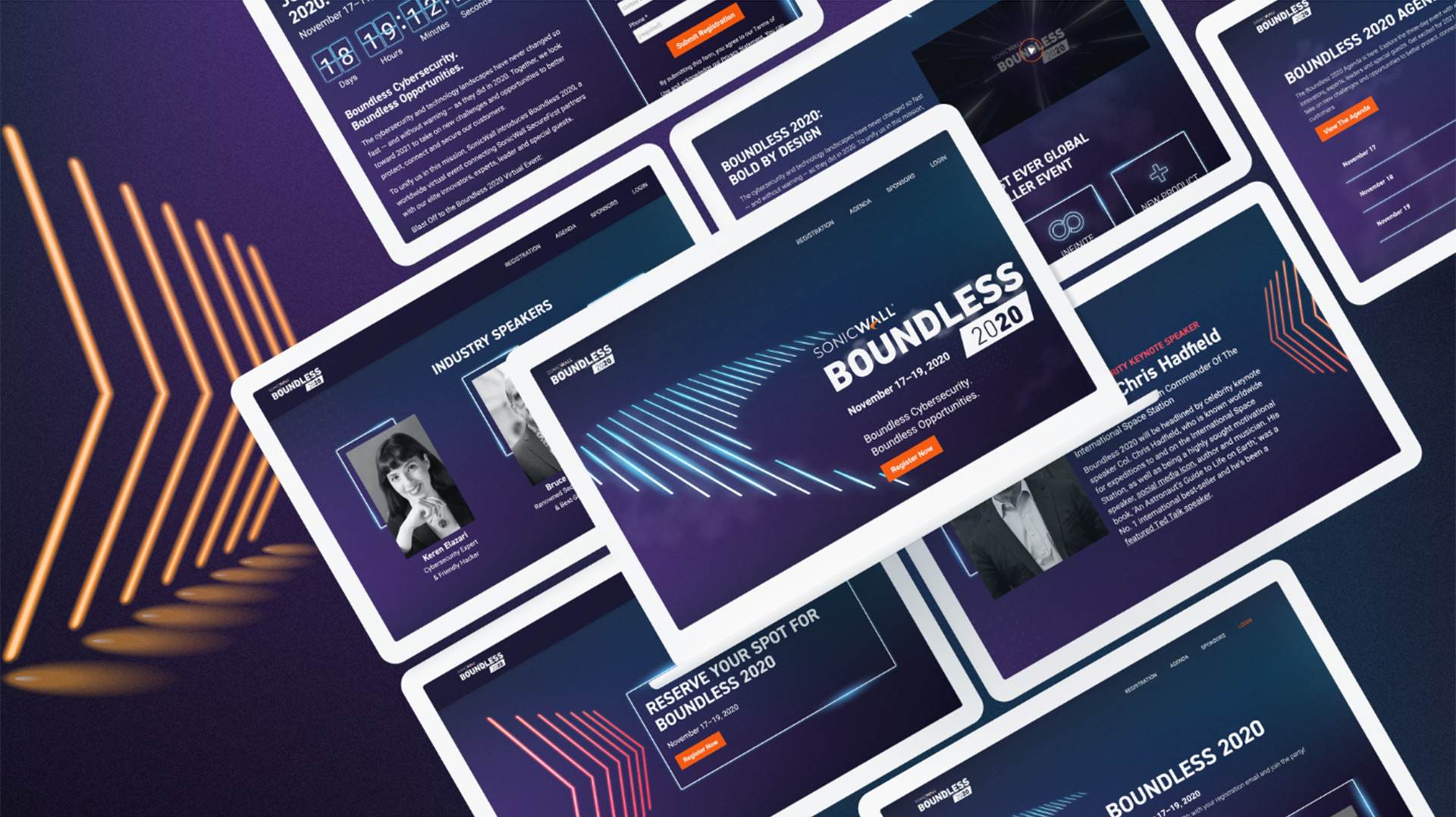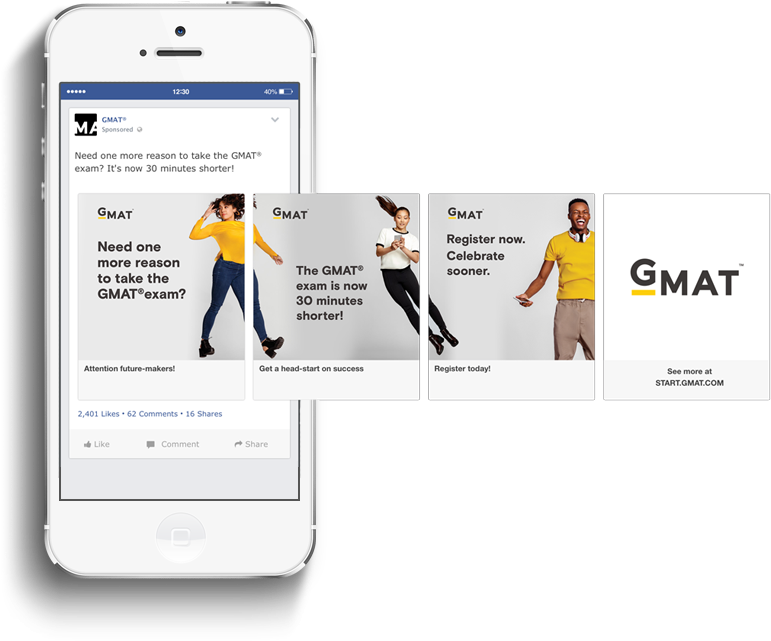Picture this: the year is 2013, Twitter is exploding into the public conscious with more than 200 million active users, and Facebook has a vice-grip on people’s free time across the globe. Social media, once considered an afterthought in any brand marketing strategy, is now on center stage. A fresh frontier to engage with current and potential customers in a way that no form of advertising has done before. Any brand worth its salt hires swathes of fresh-faced analysts to form social strategy teams and capitalize on the opportunity social media marketing presents. But, as with any emerging space, the way forward is not yet clear, and many brands are hesitant to make a bold leap into the unknown. Social media strategies are conservative and in line with traditional marketing: infographics are reposted on Instagram, product launches are promoted on Twitter, and brand Facebook pages are little more than an index of ads that have already run elsewhere. Despite social media platforms’ more casual formats, brand language is still tightly controlled and diluted with formality. The marketing world might be entering a new era, but the big brands still aren’t ready to give up their old tricks.
Now flash forward to 2022: the official Wendy’s Twitter account is telling people to smuggle Frosty’s into children’s movies, Arby’s Instagram is promoting a collab with famous rappers, and Slim Jim is furiously pushing a movement called #LongBoiGang. As a rational and well-adjusted person, you might be asking yourself how we got here? The answer, my dear reader, is memes.

What is a Meme?
So what exactly is a meme? Richard Dawkins first coined the term “meme” in his 1976 book The Selfish Gene to refer to how ideas evolve and are shared across different cultures. Under this broad definition, everything from urban legends to famous sayings could be memes. But, as the Internet began to connect people worldwide, the free exchange of information accelerated like crazy. It opened the door for new methods of conveying ideas, specifically memes as we know them today.
Modern memes can be broadly defined as pieces of media that are copied (often with slight variations) and spread rapidly by internet users. From a conflicted superhero to a distracted boyfriend, these images are retitled and reused by Internet users to comment on everything from personal events to pop culture moments. But it’s not just picture templates that can become memes: halftime shows, hashtags, and even celebrities can all be the inspiration behind Internet memes.

How Memes Can Benefit Your Brand
But even after being caught up on the history that made memes what they are today, you might still be asking yourself, what can they do for me? Here are four benefits that meme marketing can bring your business.
- Expanding your Engagement – Internet users spend an estimated 145 minutes daily on social media. They’re online to scroll through their pics, jokes, and videos while tuning out everything else around them, meaning you have the chance to capture their undivided attention. Meme marketing also opens the door to even more potential impressions through functions like shares, retweets, and comments.
- Keeping Consumer Attention – Social media users are highly resistant to traditional advertising on their favorite platforms, viewing unprompted commercials and ads as intrusions, not opportunities. But by sharing memes about your brand you can seamlessly slip into their content stream and cultivate more organic user interactions.
- No Price Promotion – The most enticing aspect of meme marketing is that it doesn’t cost a thing. Although hiring social media professionals or paid influencers can do a world of good, anyone up to date on current trends can join the fun post.
- Revealing your Relatability – One of the greatest struggles many companies have with managing their brands is appearing too outwardly corporate or robotic. Memes present a perfect opportunity for brands to communicate with consumers more casually and forge more personal connections in the process.

B2B Meme Marketing Inspiration
From forums like Reddit to social hubs like Twitter and Instagram, much of the content that keeps users returning to popular platforms are memes. If you want to meaningfully engage with consumers in these channels and build a social media strategy that isn’t stuck in the stone age, you’ll need to learn how to make memes. Here are a few examples of brands that succeeded in meme marketing to get your creative juices flowing!
- HubSpot – Fan favorite movies and TV shows present a treasure trove of possibilities for memes that social media users can recognize and connect with.
- RevGenius – Industry/category-specific memes can add a focused and personalized flair to your company’s social media presence.
- Adobe Marketo – Some companies even integrate memes into their trade show/event promotion like this make-your-own meme booth that Adobe Marketo featured to pump up engagement both online and at the event.
Want to take your social media strategy to the next level? Bluetext can help optimize your social media program and ensure you get the most out of your marketing.
Picture this. It’s a Friday night, and you’re deciding where you want to eat dinner. As you walk down the street, you’re overwhelmed by an abundance of options. Storefront posters shout weekly specials, stapled flyers advertise happy hours, promoters beckon passersby into newly opened spots, all merging into a blur of sensations.
But then, you hear it, your favorite song playing amidst the thrum of the busy street. You follow the sound to a restaurant you hadn’t noticed on the first pass, where the music continues to bump along on outdoor speakers. From the patio, you catch the smell of fresh food leaving the kitchen, getting your stomach growling and enticing you further. Stepping inside, a waiter passes by, carrying your favorite dish to a nearby table. Taking in the room’s ambiance, you turn to your friends and proclaim you’ve found tonight’s spot.
Now you’re probably wondering why I’ve had you go through this foodie fantasy with me. Part of it might be that I’m writing this blog around lunchtime and can’t help but steal glances out the window at our neighborhood sushi spot while I type. But more importantly, it serves as a perfect analogy to illustrate the value of inbound marketing and what it can do to improve lead generation for your business.
So What IS Inbound Marketing?
Inbound marketing is a methodology centered on drawing potential customers to your brand instead of trying to push your brand out in the market. Rather than utilizing external marketing tactics like TV ads, billboards, and flyers, an inbound marketing strategy seeks to attract customers by creating valuable content and experiences catered to them. Put broadly, outbound marketing brings your offering to your prospects, while inbound marketing brings your prospects to you. In doing so, you guide potential customers to your website with a pre-established positive impression—making it more likely that they’ll go with your product or service when they’re ready to buy.
Inbound marketing is content-led and hinges on providing potential customers with content that is genuinely meaningful to them. Because of its content-led nature, inbound marketing boosts SEO and organic traffic acquisition and builds trust and credibility in your brand by positioning your company as a thought leader in the market. Throughout the customer journey, the goal of inbound marketing is to add value. To be successful, you must attract users to your website with relevant and high-quality content, engaging with them and clarifying your value proposition. You must also delight users by acting as a reliable partner with a vested interest in their long-term success.
Building Your Inbound Marketing Strategy
Proper planning and optimization will be critical to the success of your inbound marketing program. Creating compelling content is about strategic planning and commitment rather than budget. You can’t just throw money at content creation and expect to come away with something compelling, you have to put your head and heart into the work. With that in mind, here are some thought-starters to create and maintain your inbound marketing strategy.
Know Your Audience and Space
Defining your business goals and buyer personas should be the genesis of any inbound marketing effort. You can’t write content to inform your customers until you’ve identified your target audience and learned all you can about them.
In the same vein, choosing the right platforms to distribute your marketing materials on will be critical in ensuring your content reaches the right prospects. Determine the best way to reach your target audience, whether through Twitter, Pinterest, Facebook, your blog, or elsewhere, to ensure your content gets to the right prospects.
Create a Journey Worth Taking
With effective inbound marketing, there should never be a dull moment in the customer journey, from impression to engagement. Aim to provide content across the customer experience. Preemptively answer the questions prospective customers will likely have at each stage of their buying journey. What makes you unique? Why should they listen to what you have to say? Successful inbound marketing tells prospective customers a unique and compelling story about your brand from first sight to final sale.
Consistency is Key
Inbound marketing is a game of consistency. Maintaining a constant stream of content tailored to your market’s current pain points and questions supports you in staying relevant and building your brand’s perception as a trusted thought leader. To effectively support your inbound marketing strategy, prioritize creating and executing on a content calendar without fail. A set schedule ensures relevant content will consistently engage your audience and keep your brand fresh in consumers’ minds. And in case you need more convincing, a 2021 Hubspot study found that brands who publish blog content at least 16 times a month generate 3.5x more website traffic and 4.5x more leads than companies that only update their blogs a few times a month.
Measure the Metrics that Matter
There’s a plethora of metrics to choose from when measuring the success of your inbound marketing strategy. From analyzing SEO rankings to measuring inbound links, these resources give valuable insight into how your campaigns perform. Prioritize regular auditing and analysis of these metrics while managing your inbound marketing to understand how effective your efforts have been and see how they can improve. If particular topics are gaining the most traction with viewers, concentrate on these areas and find unique ways to expand upon. If certain content is not generating or retaining enough attention, there is your sign to pivot.
Inbound Inspiration
Now that you’ve got your strategy set and these best practices behind you, here are some examples of engaging online content to fuel your inbound marketing efforts.
Blog
A mainstay of content creation, blogs are the perfect way to answer your prospects’ pressing questions or pique their interest with accessible long-form content. According to HubSpot, marketers who prioritize blogging are 13x more likely to get a positive ROI than those who don’t.

Case Studies
Imagine that you’re the owner of a growing business in the market for a piece of cybersecurity software that you’re unfamiliar with. You sort through an endless stream of ads and webinars talking about concepts and capabilities that all fly over your head, leaving you utterly lost. But while browsing through one company’s website, you come across a case study telling the story of a company eerily similar to yours. Reading their testimonial and hearing how transformational the software has been for them, you can’t help but think that it could do the same for your business. Emboldened by the relatable success story, you confidently choose to purchase the cybersecurity software.
That’s the power of a case study. Allowing you to focus on different customer personas in your market, case studies sway fence-sitting customers with highly-tailored promises of success.

Infographics
As helpful and engaging as written content can be, people don’t always have the patience to sit down with 1000 words about humanized homepages. Often, prospective customers just want a quick snapshot of insightful data packaged in an easily digestible and aesthetically pleasing format.

Webinar
It isn’t always easy to inject your brand’s personality into written content. While more informal content like blog posts have some wiggle-room, highly polished pieces like whitepapers and case studies often lose the human voice behind your brand.
That’s where webinars come in. Webinars-an internet seminar presenting lecture-style content to an exclusive audience-create the feeling that your brand is in direct conversation with prospective customers. They let consumers connect with the people powering your company rather than interfacing with an impersonal business entity. Additionally, the ability to request information from prospective customers for entrance to the webinar serves as a phenomenal lead generation tactic.

Video Series
It’s no secret that video content is an enormous part of marketing. It’s engaging, constantly growing, and makes up the majority of content audiences across industries are digesting on platforms like TikTok, Facebook, Instagram, and Youtube. But a key trend to capitalize on with your video content lies in its size.
While written content benefits from long-form structure, video content functions best when bite-sized. While things can vary based on platform or user persona, a general rule is that social media users will lose interest in videos longer than a minute or two.
No matter what path you decide to take your inbound marketing strategy down, Bluetext offers expert advising and cutting-edge capabilities to ensure you’ll have everything you need to succeed. Contact us to learn how inbound marketing can grow your business.
Establishing a personal connection between your business and the customers you serve is one of the most critical elements of a successful marketing strategy. From tailored social media posts to targeted ad campaigns, companies will pour swathes of resources and countless hours into pursuing a personal connection with consumers. Chasing that magic spark transforms them from company to companion in the eyes of the market. So why, if that human connection is so important, do many businesses abandon it when building their websites? Why, when they’ve almost gotten a customer to the finish line, do they greet them with generic home pages devoid of character and life? The answer lies not in the intentional design choices they made but rather the ones they didn’t. In a digital-first world and with the growth of online interactions, it is critical that digital marketers do not lose focus on the human behind the screen.
The Devil is in the Details
Certain aspects of every site (like copy and primary visuals) are often prioritized and will receive the care and attention they need to ensure user engagement. Many businesses, however, fail to consider more minute aspects of the user experience while building their websites. Elements like tab icons, custom cursors, and footer designs contribute to the feelings a potential customer will be left with after that crucial first impression on the home page. These subtle finishing touches are the lifeblood of humanized websites. While they may not be the main attraction, they play a significant role in setting your site apart from the pack and giving your brand its own distinct flair. Here are a few digital touchpoints you may have neglected, along with some inspiration from brands that are making the most of them.
Favicons; Small Pixels, Major Impacts
Favicons (a shortening of favorite icons) might only be a few pixels big, but they can significantly impact how potential customers are directed to your site. A favicon is a graphic element displayed in various places, including Google search results, autocomplete search suggestions, browser histories, and browser tabs. While they may be small, favicons play a significant role in how users recognize your brand and interact with your website. The average person has between 10 and 20 tabs open simultaneously while using the internet. A memorable favicon can help potential customers recognize and return to your site in a crowd of tabs.
Consistent aesthetics and responsive designs can help your favicons catch consumer attention and increase brand recognition. Google’s multi-color G is a classic example of the favicon and has seen its design applied to other products in the Google suite to maintain consistency and recognizability across websites. Trello’s dynamic tab icons change color and design to match users’ activity, drawing attention back to itself and giving users the sense that the site recognizes their presence.
Designing Footers That Use Your Head
Although they may come last on the page, the design of your footer shouldn’t be an afterthought. Often overlooked, the footer of your home page plays a critical role in the user journey, serving as the gateway to the other sections of your website. When a user isn’t sure where to navigate, the footer is a reliable option to find what they’re looking for. As a crux of the customer experience, the footer of your home page provides a great opportunity to incorporate design elements that support your overall brand messaging and drive a deeper understanding of your company’s vision.
Wild Souls, a Greek company dedicated to storing exotic nuts, features a rotating banner in their footer containing phrases and imagery that elaborate on the social causes they stand for. Bold expressions like “F**K PLASTIC” reinforce the anti-establishment and eco-friendly aesthetic of the Wild Souls brand.
Mafanfa, a website for buying hand-crafted Latin American goods, houses its footer’s website navigation links within various geometric shapes that spring to life when hovered over. The oblong shapes and dynamic movement give visitors a sense that the entire page is as customer-designed as the hand-woven clothing it sells.
Blue Stag is a UK-based creative agency that builds its mission on pushing boundaries and creating progress, a sentiment that comes through in their animated footer. Within it, a sky blue stag prances through a wavering mountainscape, a stark figure advancing through a changing landscape just like the company it’s named after.
Creating Custom Cursors That Click With Users
The cursor is the middleman between a user and your website. It’s a critical component of website navigation that will be within a user’s frame of focus the entire time they’re on your site. So why do so many companies neglect this constant source of consumer attention by settling with a generic white arrow? Custom cursors allow companies to provide visitors with a unique experience from the second they click into the site.
The digital agency Cuberto gives a masterclass in iterating on existing designs with their custom cursor that builds on the default design. A roving trail of dots hangs close to the familiar arrow and enlarges whenever it passes over important sections or key brand elements, a unique fusion of a design we’re familiar with and one that we’re not. Not only does this dynamic cursor intrigue visitors, but it allows Cuberto to more easily control the user journey through their homepage, drawing user attention to elements of the site they want to ensure that they see. Custom cursors can come in all different shapes and sizes, from brand icons to even animated designs. With so much opportunity, it’s a wonder why this UX trend is still such a rarity across website designs. A custom cursor is an unexpected detail that is likely to surprise and delight a website user and surely create a memorable browsing experience.
Making the most out of every element in your website design can seem like a daunting task. That’s where Bluetext can support. Contact us to learn more today.
The needs of a modern consumer are not static; they are constantly moving and advancing, shifting and changing. Customers adopt and discard products at breakneck speeds, seeking new opportunities for enjoyment and discarding them at the first sign of trouble. For a product to remain relevant in the eyes of today’s consumers, it must be able to not only meet their present needs but evolve alongside them to seamlessly adapt to future needs. Effective product management requires two critical steps; first, a deep understanding of how consumers use a product, secondly the ability to leverage that knowledge into actionable improvements. To do so, your business must understand product intelligence and its essential role in an impactful relationship with your customers.
What Is Product Intelligence?
Product intelligence refers to the use of software to collect and analyze data about a product’s performance with users. These systems gather and interpret information about how users’ interaction delivers critical insights on strengths and opportunities for improvement. Product intelligence also takes into account external factors that influence the customer relationship. Shipping, marketing, customer support, and countless other service touchpoints all influence consumer perception and ultimately the experience of your offerings. Product intelligence software helps aggregate these factors to evaluate the performance of your product holistically.

The ultimate goal is to create a positive feedback loop that enables product teams to iterate and innovate with greater speed and higher accuracy. By leveraging critical insights about the customer experience, product management teams can implement improvements to engage, convert, and retain users more effectively.
Product Intelligence Best Practices
- Understand the Customer Journey – While website interactions and app behavior are important, you need to include insights from marketing campaigns, ad spend, and other touchpoints to drive a deeper and more impactful understanding of your customers. Analytics, behavioral targeting, and customer data management cannot remain isolated from each other when optimizing product experiences.
- Collaboration Cannot Be an Afterthought – Services and integrations don’t get you a great product experience; teams do. For product intelligence to make a real impact on your business, you need to support efficient collaboration among product teams. That means being able to keep pace with rapid question-asking, in-depth exploration, agile decision-making, and generally enabling the most frictionless product development process possible.
- Assess Your Competitive Landscape – Your product offerings don’t exist in a bubble, and understanding the potential interactions consumers could have with the competition helps guide you towards truly differentiable improvements. You should strive to know your competitor’s products, strategies, and marketing tactics just as well as you know your own.

Why Is Product Intelligence Important?
Consumer preferences can change in an instant, and companies that can’t keep pace are destined to fail. Product intelligence ensures that your business will never be left behind by shining a light on the key factors that influence whether or not a consumer buys and continues using your products. Whether it’s through illustrating conversion paths, documenting user interactions, or detailing which marketing campaigns attract new visitors, the product intelligence process provides a holistic view of how your product adds value to people’s lives.
Navigating the high-stakes challenge of effective product marketing can seem like a daunting task. That’s where Bluetext can support. From omnichannel media campaigns to product videos & landing pages, Bluetext’s digital marketing experience can ensure customers old and new take notice of your company.
When you think of your business’ data, what is the first thing that pops into your head? Graphs, charts, and databases? Spreadsheets filled with row upon row of figures waiting to be put to use? While all of these things are important to your business’ data structure, they’re only individual parts of an extensive data ecosystem, an understanding of which is critical. Data ecosystems provide companies with reliable data to understand their customers and to make better pricing, operations, and marketing decisions.
What is a Data Ecosystem?
A data ecosystem is defined as a collection of infrastructure, analytics, and applications used to capture and analyze data. These applications collect and filter information for businesses to better understand their users, website visitors, and audience members. The term “ecosystem” is used because data ecosystems are dynamic and expected to constantly evolve to accommodate the changing needs of your organization.
At their core, data ecosystems are used to capture data and produce meaningful insights. As customers use products, especially digital ones, they leave behind data trails. By creating a data ecosystem, companies can catalog and analyze data trails so product teams can better understand user preferences. The best data ecosystems are constructed around a product analytics platform that enables teams to integrate multiple data sources, provide machine learning tools for automation improvements, and track user cohorts to simplify calculating performance metrics. Additional applications that analytics platforms empower include increasing user engagement, increasing user retention, and conversion tracking and marketing funnels.
Creating a Data Ecosystem
The three essential elements of a data ecosystem are infrastructure, analytics, and applications. Infrastructure can be thought of as the foundation on which everything else is built. It’s the hardware and software that capture, collect, and organize data, including servers for data storage, search languages like SQL, and hosting platforms. Analytics serves as the entryway that teams use to access their data ecosystem. Analytics platforms sift through and summarize the data within the infrastructure, so all data is visualized in a centralized place. At this level, an organization can segment users and measure them with marketing funnels, identify the traits of ideal buyers, or automatically send in-app messages to users who are at-risk for churn. Finally, applications are the individual components of the ecosystem, the services, and systems that act upon data and make it usable. At this level, users can work with their analytics data to drive critical outcomes across the organization, like a marketing team drumming up leads based on activity or a sales team tracking key user engagement. Finally, applications are the individual components of the ecosystem, the services and systems that act upon data and make it usable.
Optimizing Your Data Ecosystem
There is no one-size-fits-all approach to optimizing your business’ data ecosystem. There are, however, two concepts you can keep in mind as you work towards the right fit; democratizing your data science and establishing strong data governance. A key benefit of good data management is that everyone has the ability to access reports and insights. By democratizing your data and purchasing a large number of licenses for your analytics software, rather than restricting access to only a few employees, you can prevent bottlenecks in the flow of information and promote a frictionless exchange of information. That’s not to say that you should leave everything unbound, however. Setting rules and boundaries for employees about collecting, protecting, and accessing data is essential for shielding your company from liability and complying with federal laws about privacy protection. A marketing analytics agency, such as Bluetext can assist with prescribing the right data ecosystem tailored to your organization’s needs.
Impactful Outcomes of a Data Ecosystem
For an organization to remain competitive in any industry, they have to have a comprehensive understanding of their data. Understanding your company’s data ecosystem is the first step towards segmenting your user base, learning who they are, and revealing how they interact with your business. Informed decision-making at every level of an organization stems from understanding and engaging with its data ecosystem.
It’s no secret the digital marketing industry depends upon and craves data. Any piece of information gathered about a user can be used to strengthen your lead generation, campaign or website strategy. While every digital marketer is hungry for data, there is no value without context and robust understanding. Marketing analytics can and should be used to inform, as well as validate any digital strategy.
Contact Bluetext if you’re interested in turning analytics into action.
In 2021, the average person will encounter anywhere from 6,000 to 10,000 pieces of promotional content on any given day. Banner ads, billboards, and influencer shout-outs all inundate consumers with information about the products and services they promote. The volume of content is growing, but the audience’s time and attention span are dwindling. Brands today must duke it out in a competitive landscape where attention is a commodity and focused consideration a luxury. So how does a brand break through the never-ending stream of influence that consumers are exposed to? The answer is microcontent.

Microcontent is a self-explanatory term. Content, but smaller. It’s text, video, images, really any form of traditional content that is optimized for social media and can be consumed in 30 seconds or less. The latest trend in content marketing is adapted to the latest platforms, and modern attention spans. Microcontent provides enough time to tell your brand’s story and drive leads without requiring so much committed focus that it loses the attention of hyperactive social media users. It should be something your target audience can engage with, save, and ultimately share with other users in their network. Effective microcontent can stand on its own as a positive user experience, bringing value to the user before promoting brand offerings.
Creating microcontent is simple, as it is built from the pieces of a brand’s existing long-form content. Pull quotes can be made into actionable tips and tricks, key takeaways can be presented as small infographics or formatted lists. These tidbits can be combined with key brand messages to create card carousels that will function as the foundation for a social campaign. The microcontent creation process is all about taking the most critical elements from long-form work and formatting them into an easily digestible package that distills the essence of a brand. The trickier part is getting your microcontent in front of the right users and achieving positive engagements.

The rise of microcontent is not a self-contained trend. It’s part of a growing movement by many brands towards simplification in their messaging and content creation. As humans, we have an innate drive to simplify the complexity of the world around us, a trait referred to as the “Simplicity Principle.” The Simplicity Principle states that when our minds are presented with two options, one complex and one simple, we choose outcomes that we perceive to be as simple as possible. Ever feel overwhelmed by the 6,000+ instances of promotional content you see a day? You’re not alone, the surplus of stimuli actually has adverse effects on consumers and muddles the decision-making process. As technological advances and omnipresent social media platforms continue to make consumers’ lives exponentially more complex, they will embrace simplicity wherever they can find it.
Understanding this fact is more important for brands than it ever has been before. It only takes one look at the latest industry headlines mentioning VOD, AR, machine learning, the growing influence of big data, and countless other kinds of emerging tech to understand how consumers could feel lost. To truly reach and engage with its consumers, a brand must be able to break through the noise of the industry and present them with content that is digestible and impactful. Whether through microcontent creation or streamlining messaging about complex topics, modern brands must focus on being translators of the complex into the simple.
As a full-service digital marketing agency, Bluetext offers multiple services that can help your brand consolidate messaging into impactful and digestible content. Contact us today to learn more about our messaging and content marketing services.
